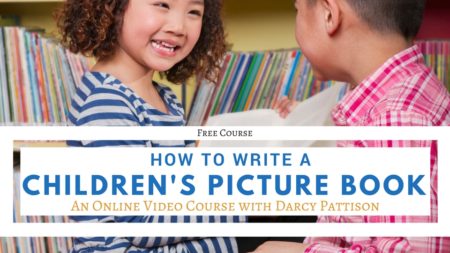One of the key things I check when revising a picture book manuscript is page turns. Have I given the reader any reason to keep turning pages, or does each page stand alone and the reader doesn’t care if s/he finishes the book?
5 Ways to Make the Reader Turn the Page
- Stop a sentence in the middle and carry it over to the next page.
Stop a sentence in the middle and carry it over to the next page.
From What Do You Do With a Tail Like This?What do you do with a tail like this? (Page turn.)
If you’re a lizard, you break off your tail to get away. - Use only half of a compound word on one page and the rest on the next page. For a masterful use of this concept, look at Rick Walton’s book, Once There Was a Bull . . .(Frog).
Once there was a bull. . .(page turn) . . .frog who had lost his hop.
- Use key transition words. Then, When, But, And, Until. . .The ellipsis (punctuated with the three spaced-out periods) works here to let the reader lengthen the transition word, until the page is turned, revealing a new illustration, and the thought can continue.
- Visuals. Strong page turns can be created with visuals – a tail (page turn) the rest of the animal. Or, provide a close up on one page and on the next page, pull back to see the whole picture. There are lots of variations on using visuals to create an effective page turn. In general, the writer can’t insist on the visual, but you can hint at it with your text.
- Cause-effect. Of course, the final way to get readers to turn the page is to write an exciting story. If the plot is exciting, then readers will turn the page to find out what happens next.
ACTION POINTS
Evaluate your manuscript. Are there ways to make the reader anticipate the page turns? If yes, revise. If you answer no, go to the next lesson.

5 thoughts on “5”
Comments are closed.